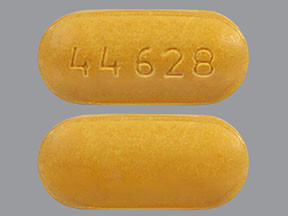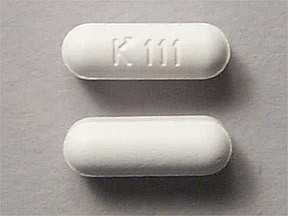EXPECTORANT/DECONGESTANT/ACETAMINOPHEN - ORAL
PHONETIC PRONUNCIATION:
GENERIC NAME(S): guaifenesin/phenylephrine HCl/acetaminophen
Uses
USES: This combination medication is used to temporarily treat symptoms caused by the common cold, flu, allergies, or other breathing illnesses (such as sinusitis, bronchitis). The expectorant helps thin and loosen mucus in the lungs, making it easier to cough up the mucus. Decongestants help relieve stuffy nose, sinus, and ear congestion symptoms. Acetaminophen (APAP) is a non-aspirin pain reliever and fever reducer. This medication is not usually used for ongoing coughs from smoking, asthma, other long-term breathing problems (such as emphysema), or coughs with a lot of mucus unless directed by your doctor. Cough-and-cold products have not been shown to be safe or effective in children younger than 6 years. Therefore, do not use this product to treat cold symptoms in children younger than 6 years unless specifically directed by the doctor. Some products (such as long-acting tablets/capsules) are not recommended for use in children younger than 12 years. Ask your doctor or pharmacist for more details about using your product safely. These products do not cure or shorten the length of the common cold and may cause serious side effects. To decrease the risk for serious side effects, carefully follow all dosage directions. Do not use this product to make a child sleepy. Do not give other cough-and-cold medication that might contain the same or similar ingredients (see also Drug Interactions section). Ask the doctor or pharmacist about other ways to relieve cough and cold symptoms (such as drinking enough fluids, using a humidifier or saline nose drops/spray).
How to use EXPECTORANT/DECONGESTANT/ACETAMINOPHEN - ORAL
HOW TO USE: See also Warning section. Read and follow all directions on the package label. If you have any questions, consult your pharmacist. Take this medication by mouth with or without food, usually every 4 to 6 hours as needed or as directed by your doctor. Drink plenty of fluids when you use this medication unless otherwise directed by your doctor. The fluid will help loosen the mucus in your lungs. If you are using the liquid form of this medication, carefully measure the dose using a special measuring device/spoon. Do not use a household spoon because you may not get the correct dose. If your liquid form is a suspension, shake the bottle well before each dose. The dosage is based on your age, medical condition, and response to treatment. Do not increase your dose, take it more frequently, or use it for a longer time than directed. Do not give children medicines labeled only for adults. Tell your doctor if your condition persists for more than 1 week, if it worsens, or if it occurs with rash, persistent headache, or fever lasting more than 3 days. These may be symptoms of a serious medical problem and should be checked by a doctor.
Side Effects
Precautions
Interactions
Overdose
Images

- color
- yellow
- shape
- oblong
- imprint
- 44 628

- color
- white
- shape
- oblong
- imprint
- TYLENOL, 1072

- color
- yellow
- shape
- oblong
- imprint
- 44 628
Reviews
Faq for EXPECTORANT/DECONGESTANT/ACETAMINOPHEN - ORAL
An expectorant is a medication that helps to loosen and thin mucus in the airways, making it easier to cough up and clear the lungs.
A decongestant is a medication that helps to relieve nasal congestion by reducing the swelling of blood vessels in the nasal passages, allowing for easier breathing.
Acetaminophen is a common over-the-counter pain reliever and fever reducer. It is often used to alleviate mild to moderate pain and reduce fever.
The combination medication containing expectorant, decongestant, and acetaminophen works to provide relief for symptoms associated with respiratory infections. The expectorant helps to thin and expel mucus, the decongestant relieves nasal congestion, and acetaminophen reduces pain and fever.
This combination medication is commonly used for the temporary relief of cough, nasal congestion, sinus congestion, headache, sore throat, and fever associated with the common cold and flu.
If you have high blood pressure or any other cardiovascular conditions, it is important to consult with your healthcare provider before taking this combination medication. Some decongestants can raise blood pressure, so it is important to ensure the medication is safe for you.
Common side effects may include drowsiness, dizziness, upset stomach, dry mouth, and increased heart rate. It is advisable to read and follow the instructions on the medication label and consult a healthcare provider if any severe side effects occur.
It is important to consult with a healthcare professional or pharmacist before taking this combination medication with other medications. Certain medications, such as MAO inhibitors or certain antidepressants, may interact with components of the combination medication and cause harmful effects.
The dosing instructions will vary depending on the specific medication. It is advisable to carefully follow the instructions on the packaging or consult a healthcare provider for proper dosage guidance.
Warning
WARNING: One ingredient in this product is acetaminophen. Taking too much acetaminophen may cause serious (possibly fatal) liver disease. Adults should not take more than 4000 milligrams (4 grams) of acetaminophen a day. People with liver problems and children should take less acetaminophen. Ask your doctor or pharmacist how much acetaminophen is safe to take. Do not use with any other drug containing acetaminophen without asking your doctor or pharmacist first. Acetaminophen is in many nonprescription and prescription medications (such as pain/fever drugs or cough-and-cold products). Check the labels on all your medicines to see if they contain acetaminophen, and ask your pharmacist if you are unsure. Get medical help right away if you take too much acetaminophen (overdose), even if you feel well. Overdose symptoms may include nausea, vomiting, loss of appetite, sweating, stomach/abdominal pain, extreme tiredness, yellowing eyes/skin, and dark urine. Daily alcohol use, especially when combined with acetaminophen, may damage your liver. Avoid alcohol.
Disclaimer
IMPORTANT: HOW TO USE THIS INFORMATION: This is a summary and does NOT have all possible information about this product. This information does not assure that this product is safe, effective, or appropriate for you. This information is not individual medical advice and does not substitute for the advice of your health care professional. Always ask your health care professional for complete information about this product and your specific health needs.


No Reviews Yet